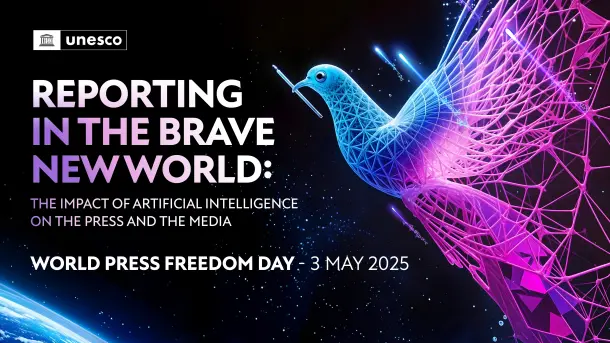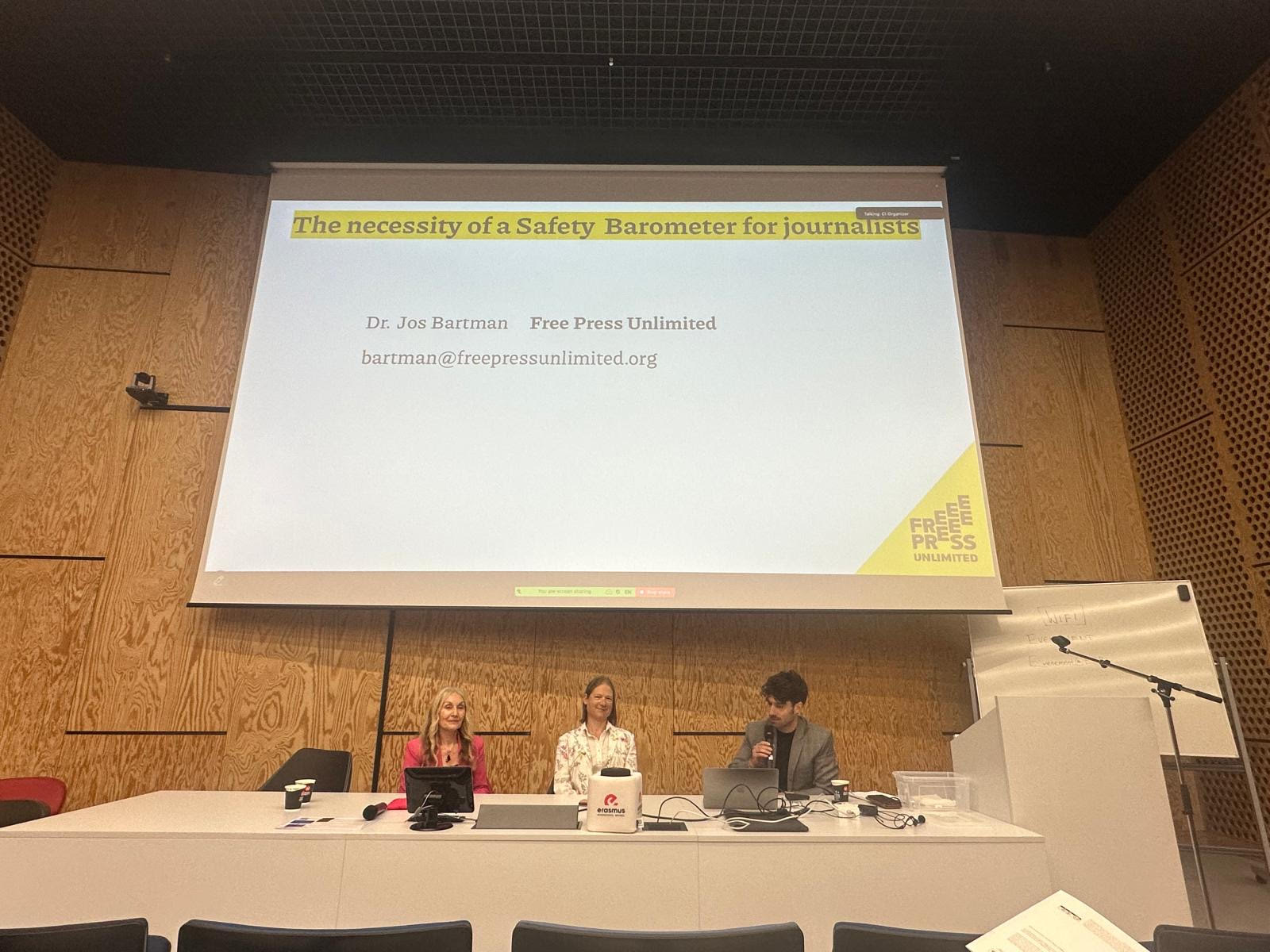World Press Freedom Day 2025

As part of World Press Freedom Day 2025, CFOM Researchers and the UNESCO Chair on Media Freedom, Journalism Safety and the Issue of Impunity, travelled to Brussels, Belgium, to take part in the Academic Conference. They hosted a panel focusing on their research on monitoring which aims to improve understanding of the contextual predictors of lethal and non-lethal violence towards journalists.
The Academic Conference took place at Erasmushogeschool Brussel. This year marked the eighth year of the Academic Conference, which was opened by Dr. Tawfik Jelassi (right), Assistant Director-General for Communication and Information, UNESCO. CFOM Chair and UNESCO Chair on Media Freedom, Journalism Safety and the Issue of Impunity, Professor Jackie Harrison (centre), also delivered opening remarks alongside Dr. Vera Slavtcheva-Petkova (left), Associate Dean Global Engagement, University of Liverpool.

Five panels took place throughout the day, focusing on a wide range of topics including focusing on how we can bridge the divide between journalism education and journalism practice and how newsrooms can adapt to AI in the digital environment. The Worlds of Journalism Study also presented preliminary results from surveys conducted with more than 31,000 journalists in over 70 countries as part of the third wave of the study. The University of Oregon School of Journalism and Communication also presented their international project and related publication “Extra! Extra! Don’t Kill the Messenger”.
Towards a journalist risk barometer using AI to understand contextual predictors of violence

CFOM Researchers hosted a panel focusing on collaborative research that is taking place at the Centre, based at the University of Sheffield, involving Free Press Unlimited and UNESCO. Sitting on the panel was: Professor Jackie Harrison; CFOM Researcher and Senior Research Fellow in the School of Computer Science, Dr Diana Maynard; and Research Coordinator at Free Press Unlimited (FPU), Jos Bartman. The project aims to improve the understanding of the contextual predictors of lethal and non-lethal violence towards journalists. As things currently stand, adequate monitoring of attacks against journalists is currently lacking, especially in line with UN SDG 16.10.1, which specifies the categories of killing, kidnapping, enforced disappearance, arbitrary detention, torture and “other harmful acts”.
The panel noted how murder is often used as the sole indicator of violence or repression and, in turn, this leads to a skewed picture of repression and violence against journalists. They discussed their project and how their research into the monitoring of non-lethal human rights violations against journalists aims to collect and assess data from a range of sources relating primarily to non-lethal human rights violations. As a result of this, the research team are looking to develop a journalist risk barometer through the use of machine learning to identify patterns and indicators, which will also help to identify contextual risk factors that elevate threats, such as online harassment, legal intimidation, democratic backsliding, civil conflict, and physical violence.
Diana spoke about the data analysis conducted in the project, which aims to detect patterns and hotspots using global event data from various worldwide data resources describing attacks against journalists. She described the investigation of a variety of geographic, economic and political contextual factors that might be correlated with the incidence of such violation, with the aim of spotting emerging risks as they arise and presented findings from the correlation of the events data with relevant country-level indicators of democracy from the VDEM (Varieties of Democracy) dataset, focusing particularly on a case study of India. Key findings show that certain democratic indicators can predict the incidence of specific types of attacks on journalists (for example, political polarisation strongly predicts media restrictions, reflected also in the BJP’s “presstitute” rhetoric). Conversely, media restrictions may also precede indicators such as regime deterioration. Our case study, which captures India’s institutional realignment after 2014, shows how polarised politics has enabled systematic constraints on democratic institutions while maintaining formal democratic structures—matching global patterns of democratic backsliding by legal means.
Jos discussed an analysis of FPU’s Reporters Response data, specifically with regards to the legal threat data that FPU tallies. For this analysis, the Reporters Respond data was merged with the Varieties of Democracy (VDEM) dataset and the Episodes of Regime Transition dataset in order to explore in which political constellations we can expect an increase in legal threats towards journalists.
Jackie concluded the panel by discussing how this brings all of our research together, focusing on the different communicative contexts in which journalists operate across the world and are decisive in understanding that attacks on journalists don’t emerge out of thin air. She provided a new typology of four different scenarios in order to better understand and assess the communicative conditions in which journalists are expected to operate: S1) rests on the extent of forbearance (i.e. tolerance and respect) whereby different truths and irreconcilable values can be accommodated and remain non-weaponised by political actors. At its core is a recognition of the importance of solidarising sentiment and a belief that liberal democracy (and the uncomfortable civil and political power it accords to journalism) is the best form of political arrangement. S2) rests on the basis that different truths and irreconcilable values can be amplified and weaponised by political actors, facilitating an increasing distrust/dislike of liberal democracy and a growing antipathy towards the protections it offers to oppositional or investigative voices; S3) rests on a rejection of universal values and a separation of democracy from its liberal roots into hybrid forms of political arrangement such as illiberal democracy, undemocratic liberalism, electoral autocracy or imitative democracy and S4) rests on the state’s complete (institutional) domination and expectations of compliance through the use of existential threat and the expectation of anticipatory obedience. In reality there could be one or more scenarios overlapping and colliding in any given state context and we will explore these through case studies later in the project, nevertheless four scenarios provides analytical clarity on the scale and scope of the deterioration of circumstance under which journalists are required to operate.
